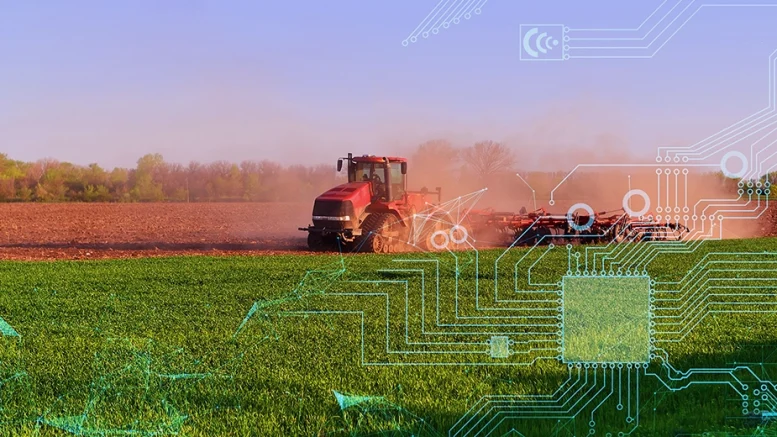“Focus on solving real challenges in the agri-food production chain, mainly inside the farms…”
Luiz Ojima Sakuda (left) is a partner at Homo Ludens and co-coordinator of Radar Agtech, with a degree in administration from FGV and a Ph.D. in production engineering from USP.
Aurélio Favarin (right) is a researcher at Embrapa and co-coordinator of Radar Agtech, graduated in public relations from UEL, with a M.Sc. from the University of Madrid.

Sakuda & Favarin, co-coordinators of Radar Agtech
AgriBrasilis – What makes an agtech succeed where so many fail?
Sakuda & Favarin –It is possible to observe that the most resilient agtechs share some characteristics:
– Focus on solving real challenges in the agri-food production chain, mainly inside the farms, such as technologies associated with insputs application and monitoring, in addition to focusing on topics that support agricultural production, such as credit.
– Capacity for regional adaptation and integration, understanding the diversity of biomes, farmer profiles and production chains — for example, the internalization of solutions and the customization of business models according to the chain segment (before, inside and after the farm gate).
– Participation in structured ecosystems that have a good volume and diversity of innovation environments and open innovation programs. In 2024, 451 innovation environments were mapped, showing the importance of insertion in well-connected and structured networks.
– Financial and strategic resilience: Access to capital and solid governance are critical.
AgriBrasilis – Why has the number of financial agtechs grown so much?
Sakuda & Favarin –AgFintechs have become key players for several reasons. Access to traditional rural credit is still a pain for small and medium-sized producers. AgFintechs offer more accessible, digital solutions that are adapted to the reality of the field and producers, with customized products.
AgriBrasilis – Is the lack of digitalization in the rural area still an obstacle?
Sakuda & Favarin –Rural connectivity remains a major challenge, but significant progress has been made. Data from the 2024 ICT Household Survey show that the number of Brazilian rural households with internet access increased from 22.3% in 2015 to 73.8% in 2023. However, regional inequalities and infrastructure limitations persist, especially in areas with low population density.
The lack of connectivity directly impacts the full use of technologies. Technical training is also a barrier. Many producers are still unfamiliar with digital solutions and require ongoing training.
AgriBrasilis – What are some notable examples of collaboration between startups and large agricultural companies?
Sakuda & Favarin –The Radar Agtech Brasil 2024 brings emblematic cases of open innovation and co-creation between startups and large corporations, such as programs from Embrapa, PwC Agtech Innovation and Agro Valley Londrina, which connect different players of the innovation ecosystem, such as startups, large companies, investors, universities and farmers. To give some examples:
– Low Carbon Soybean, coordinated by Embrapa’s Soybean Unit, in partnership with the private sector, focuses on establishing a low carbon soybean farming protocol;
– AgNest: farmlab located in Jaguariúna, coordinated by Embrapa, in partnership with Banco do Brasil, Jacto and other organizations, offers an experimentation space for startups connected to the institutions involved;
– Sustainable Soybean from the Cerrado Biome: led by PwC Agtech Innovation, with the participation of Embrapa and partners, fosters the development of technologies connected to soybean for the Cerrado biome;
– Agro Valley Londrina: governance of the innovation ecosystem of Londrina/State of Paraná, with the participation of Cocriagro, Embrapa’s Soybean Unit, Sebrae, Integrada Agricultural Cooperative, IDR-PR, the Federal Technological University of Paraná, etc.
AgriBrasilis – What is the role of incubators and innovation ecosystems?
Sakuda & Favarin –Incubators function as innovation nurseries, being responsible for the early stages of development of startups and their technologies. In general, most incubators are public. Accelerators, on the other hand, are generally private, focused on scaling up startups’ technologies.
Innovation ecosystems strengthen territorial governance, which is essential to sustain innovation in the long term, especially in the face of climate pressures and the ESG agenda.
AgriBrasilis – What do the new Radar Agtech surveys reveal about the sector?
Sakuda & Favarin – O Radar Agtech 2024 trouxe avanços estruturais importantes:
– Growth from 1,125 (2019) to 1,972 agtechs (2024), with greater regional diversity and more balanced segmentation of the agri-food chain (before, on and after the farm).
– The “on-farm” segment surpassed the others, with 818 agtechs (41.5%), reflecting the advance of digitalization in primary production.
– Robust investments: US$ 550 million raised in 2024 (+25% vs. 2023). Five Brazilian rounds represented 30% of the total volume raised in Latin America.
– Trends highlighted by investors include: bioinputs, AI, IoT, traceability via blockchain, genomics, cultivated meat and circular economy solutions.
The agri-food ecosystem is more mature, resilient and connected, with the potential for global leadership in innovation applied to agriculture.
AgriBrasilis – What is the Agtech Radar and what are the project’s planned actions?
Sakuda & Favarin – Radar Agtech is planning a future of expansion and internationalization, with several strategic initiatives under development. Among the main plans are the publication of Radar in English and Spanish, expanding its reach and influence in Latin America and global markets. Regional and thematic research and events are also planned, such as studies focused on public policies, webinars, awards and training programs for both producers and startups. A new digital connection platform with artificial intelligence support is also under development, reinforcing Radar’s role as an interactive tool for ecosystem articulation. This vision of the future consolidates Radar Agtech as a hub of knowledge and strategic innovation for agriculture, with a growing impact on policy formulation, fostering entrepreneurship and integration between science, technology and the market.
READ MORE:

